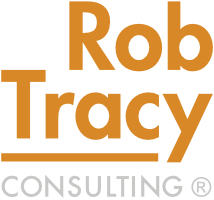I’ve always been fascinated with heavy equipment. I suppose it started with my Tonka trucks in the sandbox. To this day, I can watch a backhoe in action with no small degree of amazement. In the hands of an experienced operator, this hunk of metal, cylinders and hydraulic fluid becomes a work of grace and beauty.
The operator sits in front of a non-intuitive control panel with a group of levers, and they’re able to pull just the right levers in just the right amount at just the right time to make the backhoe behave like a living organism. It is smooth, efficient, and seemingly effortless.
There are several things business leaders can learn from the humble backhoe:
- Backhoe operators develop their skills by pulling one lever at a time and getting immediate visual feedback. They use this immediate feedback to make adjustments and course corrections. The operator’s skill improves because he can see first-hand how the machine responds to actions taken in the cab. Business leaders should follow this principle when they are attempting something new that has an uncertain outcome. When testing a different quoting method or a new piece of equipment, it is wise to enter the experiment thoughtfully. Before pulling the lever, predict the outcome and determine how to get timely, easy-to-understand feedback. Setting solid expectations, with a robust feedback loop, will dramatically improve the success rate of improvement initiatives.
- Becoming a proficient machine operator requires an understanding of how the equipment works. Operators learn the purpose of the various gauges, switches, and levers, and they have a dashboard in front of them that informs them about whether the machine is operating properly. Business leaders also need a dashboard that is clear and uncluttered. They need relevant metrics – both financial and operational – to inform them if the business is operating as intended. A simple dashboard with a few key, reliable, gauges can keep a leadership team well informed about the state of the business, while a cluttered or broken dashboard can leave the leadership team operating blind.
- Truly excellent operators advance beyond pulling one lever at a time and watching the gauges. They develop a ‘feel’ for the machine, and they pull multiple levers simultaneously and in harmony to make the machine dance. This level of mastery is developed through repetition and practice with strong feedback loops, which leads to a deep understanding of how the machine behaves. Business leaders can strive to achieve this level of mastery as well. Getting the company to achieve great results while operating smoothly and effortlessly requires the artful manipulation of multiple levers, often in small increments. I was working with a client recently that wanted to advance their profitability from merely acceptable to outstanding. Our conclusion was that all they needed to do was a series of micro-adjustments on pricing, material purchasing, productivity, and throughput to accomplish the goal. That is preferable, by far, to extreme yanking of any single lever. In business, just like in a backhoe, stuff breaks when one lever is pulled too hard too often.
As the saying goes, the devil is in the details. What sets excellent leaders apart from good leaders is their mastery of the interconnected pieces of the business. Through repetition and active learning, they’ve developed an understanding of how their business will respond to slight adjustments of the levers, and they keep an eye on the dashboard just to make sure that the machine is functioning well.
Quote of the day:
“If people knew how hard I worked to get my mastery, it wouldn’t seem so wonderful at all.”
— Michelangelo
